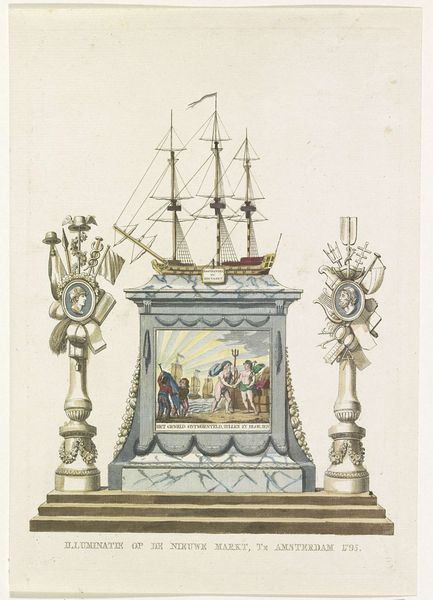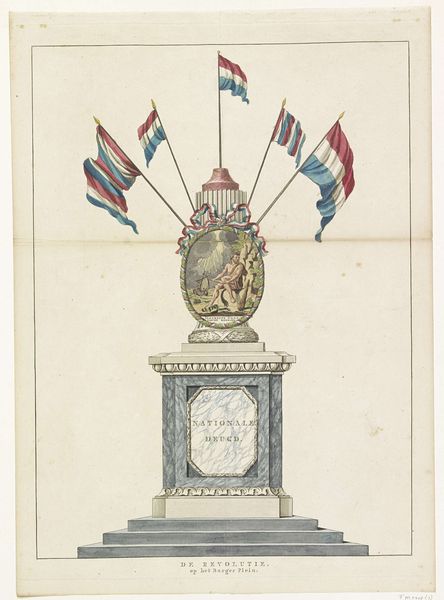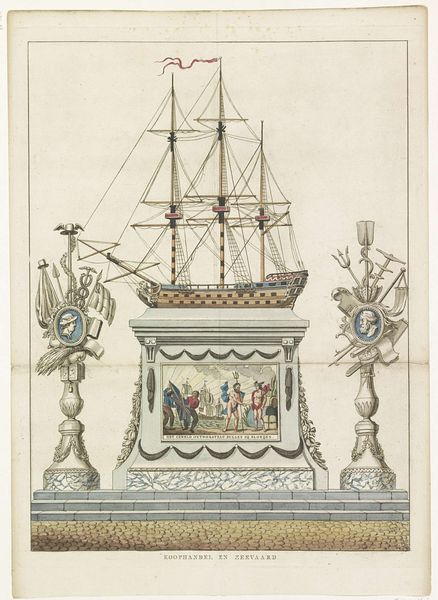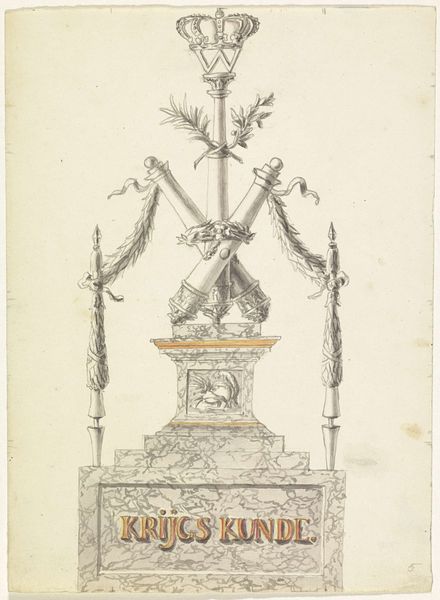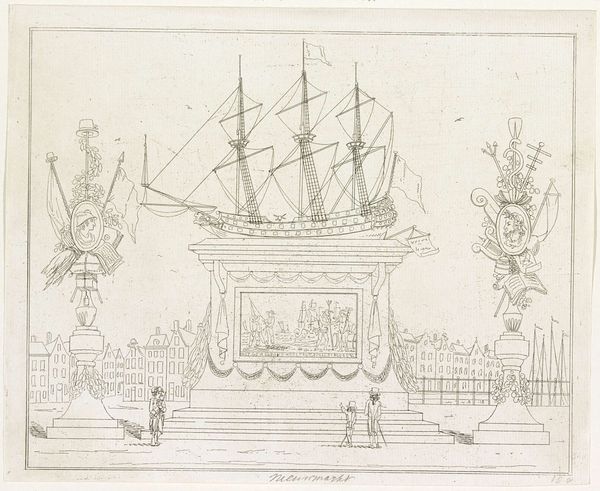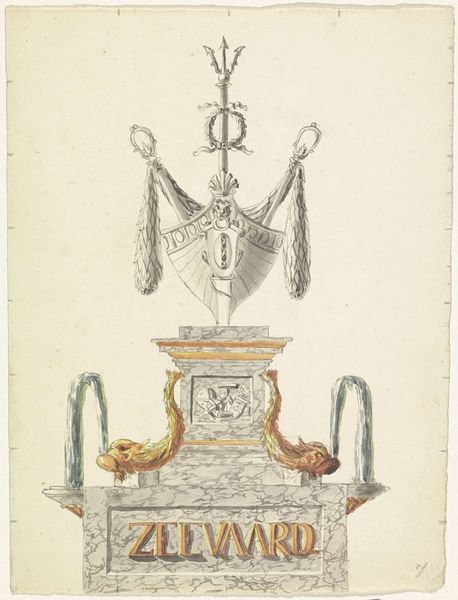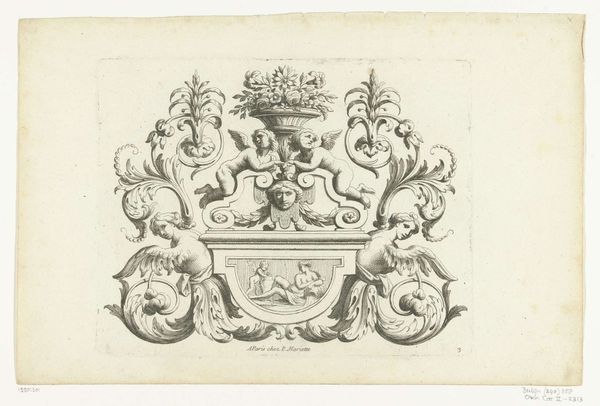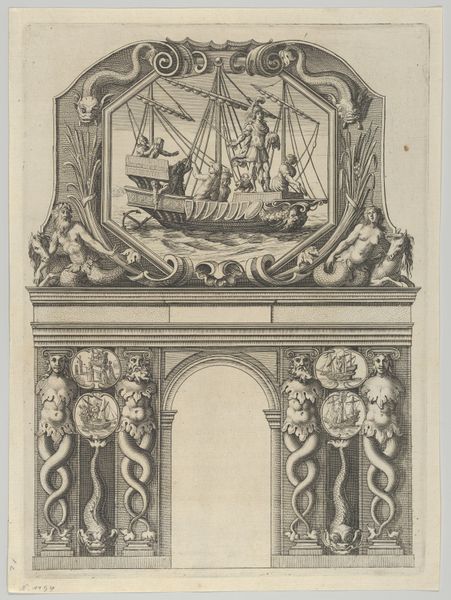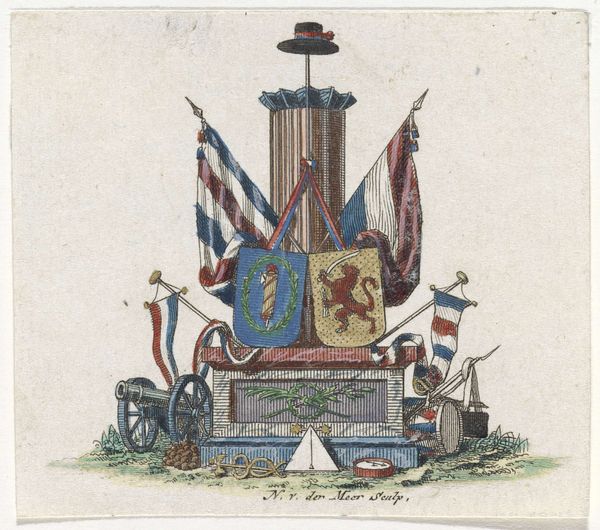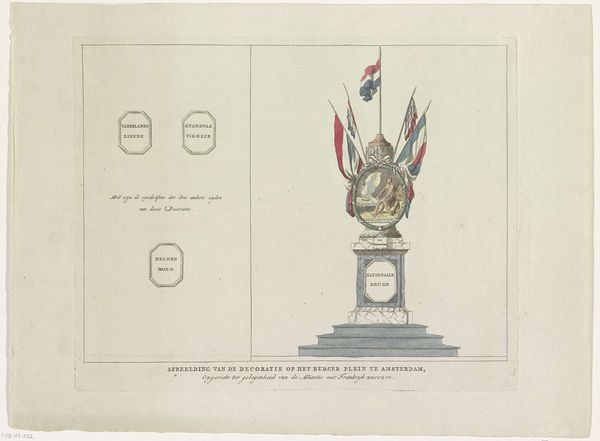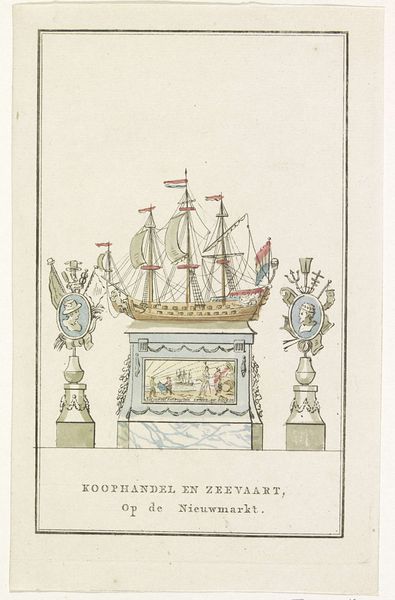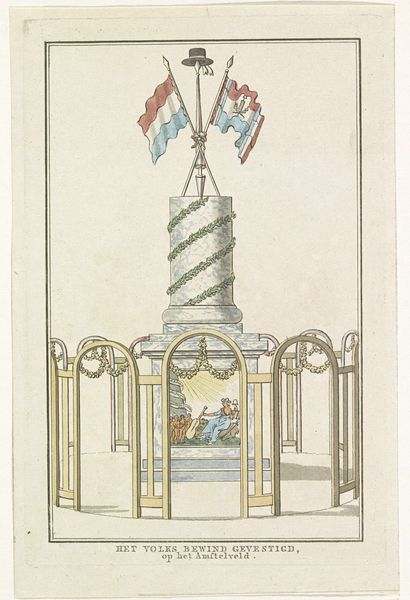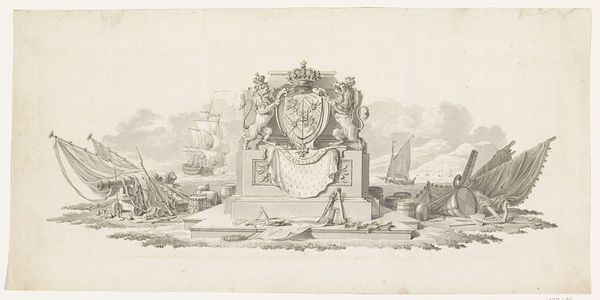
drawing, print, etching, paper, ink
#
drawing
#
dutch-golden-age
#
ship
# print
#
etching
#
paper
#
ink
#
cityscape
#
watercolour illustration
#
genre-painting
Dimensions: height 242 mm, width 306 mm
Copyright: Rijks Museum: Open Domain
Editor: This is "Koophandel en Zeevaart, decoratie op de Nieuwmarkt, 1795," made in 1795 by an anonymous artist. It’s a drawing, etching, and print on paper with ink, held at the Rijksmuseum. It's fascinating... I’m curious about how the celebration connects to the history and significance of trade and maritime power in Amsterdam. What stands out to you when you see this piece? Curator: I'm drawn to the way this piece intersects with the complex politics of the late 18th century. Amsterdam's "Golden Age" relied heavily on maritime trade, including some ethically questionable practices. Knowing this, how does seeing this celebratory image, likely commissioned by those in power, make you feel? Editor: A bit conflicted, honestly. The artwork is beautiful, but it does mask potentially troubling narratives related to colonial exploitation. Curator: Precisely! The grandeur suggests prosperity, but what's being glossed over? The focus on "Koophandel en Zeevaart" or "Trade and seafaring" hints at the Dutch Republic's economic engine, but consider who benefited and who was exploited by these activities. How might an artist from a marginalized community have depicted this scene differently? Editor: That's a really important perspective. It highlights the absence of other voices. By focusing solely on the victors, it silences any critique. It’s making me wonder who the intended audience was for this display? Curator: Good question! The location, the Nieuwmarkt in Amsterdam, was historically a site of both commerce and public assembly, hinting the target audience was all social classes within Amsterdam. It could've served as propaganda, solidifying the ruling class's control by promoting an idealized version of reality. Knowing this do you see potential signs of unease embedded within this "celebratory" scene? Editor: That's interesting, I never would have looked at it that way. It's crucial to analyze art by considering its historical context and whose stories are being privileged. Curator: Exactly! And it's equally crucial to question the narratives that are presented and how those narratives relate to contemporary sociopolitical issues.
Comments
No comments
Be the first to comment and join the conversation on the ultimate creative platform.
